Explore Wajima - Japan Travel, Asia
Nestled on the breathtaking Noto Peninsula in Ishikawa Prefecture, Wajima is a hidden gem of Japan that awaits to be discovered. Known for its rich cultural heritage, traditional crafts, and stunning natural landscapes, this charming coastal city offers a unique blend of history, tradition, and beauty. Whether you're an adventurer, a history enthusiast, or a foodie, Wajima has something to captivate every traveler. Let’s explore the best of Wajima, from its top attractions and must-try dishes to its vibrant festivals and local culture.
Craving an exceptional Japan adventure? Explore our handpicked premium tours here for the ultimate experience.
Population: Approximately 28,000 in 2018.
Economy: The primary industries in the area are lacquerware manufacture, tourism, agriculture, and commercial fishing.
Landmarks: Famous for the Wajima Morning Market ( or Wajima Asaichi), Senmaida Rice Terraces, and Wajima-nuri Lacquerware Workshops.
Japan
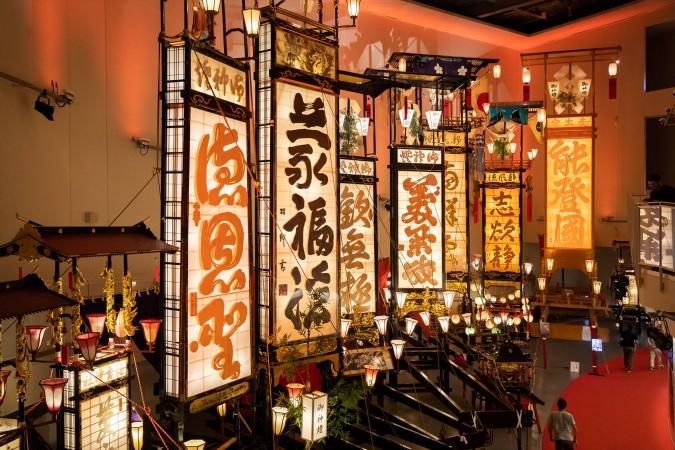
Overview of Wajima
History & Cultural Influence
Wajima's history dates back to ancient times, with its development spanning several centuries. During the Edo period, Wajima thrived as a significant port and cultural center, influencing the region's art, trade, and traditions. The city's historical significance is evident in its preserved architecture, traditional crafts, and local customs that have been passed down through generations. Along with its historical past, Wajima's cultural heritage has been shaped by its interactions with neighboring regions and the natural environment. One of the city's most renowned traditions is Wajima-nuri, a form of lacquerware that exemplifies meticulous craftsmanship and artistry. This traditional craft is not only a testament to Wajima's rich culture but also a symbol of its enduring artistic legacy.
Interaction with The Locals
Wajima is home to a population of approximately 28,000 residents. The city's citizens are known for their warmth and hospitality, welcoming visitors with open arms. They take pride in their rich cultural heritage, especially in traditional crafts like Wajima-nuri lacquerware. The close-knit community values their traditions and often engages in local festivals and daily markets, providing visitors with a genuine and immersive cultural experience. The people of Wajima embody the spirit of their city, combining a deep respect for history with a friendly and inviting demeanor.
Explore the unique charm of Kyoto, another must-visit place in Japan, in our article here.
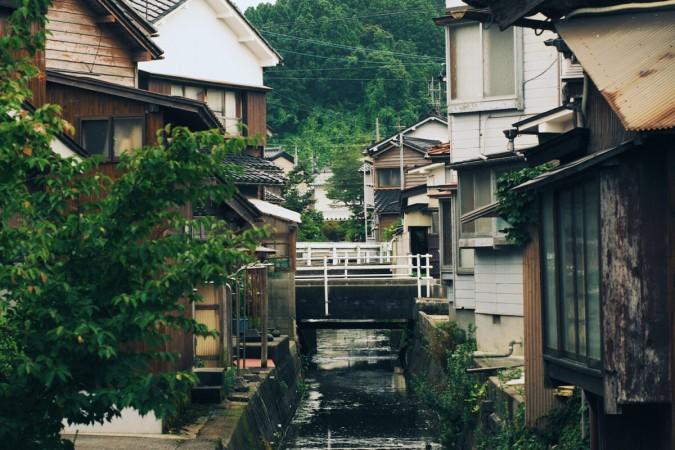
Wajima Shi, Ishikawa Prefecture - © Japan Artisan Foundation
Top Attractions in Wajima
Wajima Morning Market (Wajima Asaichi)
The Wajima Morning Market is a bustling and vibrant hub where you can experience the essence of local life. This market, which opens early each day, is well-known for its extensive selection of fresh seafood, regional products, and handcrafted goods. Stroll through the lively stalls to sample seasonal fruits, freshly caught fish, and handmade items like Wajima-nuri lacquerware.
Senmaida Rice Terraces
The Senmaida Rice Terraces are a stunning example of traditional Japanese agriculture and landscape artistry. Stretching over 1,000 rice paddies, these terraces are meticulously maintained by local farmers. Especially at sunrise or sunset, the terraces' reflection of the sky is a sight to see. Walking paths wind through the fields, offering visitors a chance to appreciate the beauty of this agricultural marvel up close and to enjoy panoramic views of the surrounding countryside.
Wajima-nuri Lacquerware Workshops
Wajima is renowned for its high-quality lacquerware, known as Wajima-nuri. To fully appreciate this traditional craft, visit one of the lacquerware workshops where skilled artisans demonstrate the meticulous process of creating these beautiful pieces. You can participate in hands-on sessions to learn about the art of lacquering, from the initial application of lacquer to the intricate designs and polishing techniques. These workshops offer a deep dive into the cultural significance and craftsmanship behind Wajima-nuri.
Sosogi Coast
The stunning natural beauty and rugged shoreline of the Sosogi Coast are well-known among locals and other visitors. Known for its rugged cliffs, rocky shores, and clear blue waters, the coast is a haven for nature lovers and photographers. Take a scenic walk along the coastline to marvel at the unique rock formations and enjoy the refreshing sea breeze. The coast is also a great spot for a leisurely picnic while taking in the stunning ocean views.
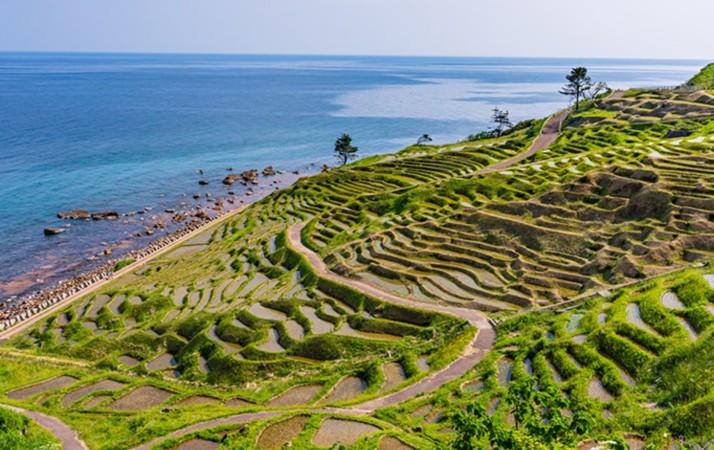
Senmaida Rice Terraces - © Japan National Tourism
Must-Try Dishes in Wajima
Wajima's culinary tradition is a delight for food lovers. The city is famous for its fresh seafood, thanks to its coastal location, and its traditional dishes reflect the local flavors and culinary techniques. Each dish tells a story of the region's traditions, flavors, and the pride locals take in their food, adding another layer of enjoyment to your visit.
- Noto Beef: Known for its tender texture and rich flavor, Noto beef is a must-try delicacy in Wajima. It's often served grilled or in hot pot dishes, providing a melt-in-your-mouth experience.
- Wajima-Style Sushi: Fresh seafood is a staple in Wajima, and the local sushi is no exception. Made with the freshest fish and seasoned rice, Wajima-style sushi is a culinary treat.
- Kaisendon (Seafood Bowl): A delightful bowl of fresh, raw seafood served over a bed of rice. Topped with various sashimi, sea urchin, and other local catches, it's a dish that showcases the best of Wajima's seafood.
- Wajima Nabe: A traditional hot pot dish featuring a rich broth, fresh seafood, and seasonal vegetables. During the colder months of Winter, this dish is the perfect comfort delight.
- Noto Don: This local dish features rice topped with a variety of local ingredients, such as Noto beef, seafood, and vegetables, often seasoned with soy sauce and local spices.
- Shioyaki (Salt-Grilled Fish): Freshly caught fish, often sea bream or mackerel, grilled to perfection with a simple seasoning of salt. The natural flavors of the fish are enhanced by the grilling process.
- Soba and Udon Noodles: Handmade buckwheat soba and thick wheat udon noodles served in various styles, including hot broth, cold dipping sauce, and topped with tempura or fresh seafood.
- Traditional Japanese Sweets: Don't miss out on trying Wajima's traditional sweets, such as mochi and manju, which are often beautifully crafted and delicious.
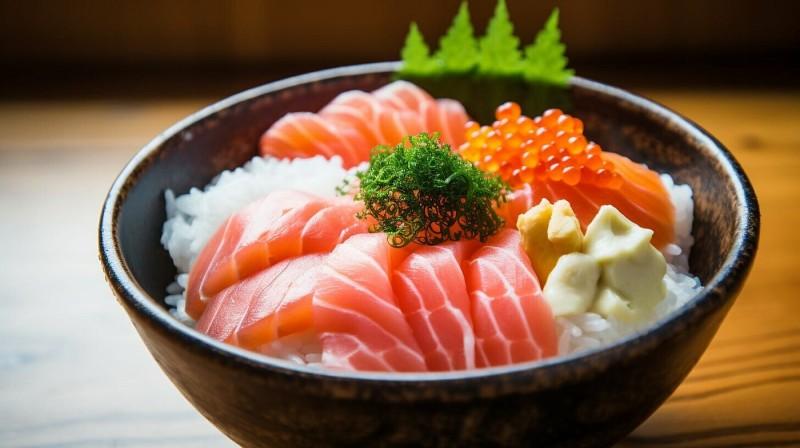
Kaisendon (Seafood Bowl) - © Medium
Festivals & Local Celebrations
Major Festivals in Wajima
- Wajima Taisai Festival: Held annually in August, Wajima Taisai is one of the city's most vibrant and culturally significant events. The festival features spectacular parades with ornate floats, traditional dances, and the famous "kiriko" lanterns, which are large, intricately decorated lanterns carried through the streets. This lively celebration provides an immersive experience into Wajima’s local traditions and offers visitors a chance to participate in the festivities alongside locals.
- Kiriko Lantern Festival: Another highlight of Wajima’s festival calendar is the Kiriko Lantern Festival. This enchanting event takes place in summer and is famous for its giant, beautifully illuminated lanterns. The festival includes traditional music performances, dance, and food stalls. The sight of the lanterns glowing against the night sky creates a magical atmosphere, making it a memorable experience for both locals and visitors.
Seasonal Celebrations in Wajima
- Spring Cherry Blossom Viewing (Hanami): In spring, Wajima's parks and gardens are adorned with cherry blossoms. Hanami, the traditional practice of picnicking under blooming cherry trees, is a beloved activity for locals and tourists alike.
- Autumn Harvest Festival: This October festival marks the end of the harvest season. It features local produce, traditional music, and dances, giving visitors a taste of Wajima's agricultural heritage.
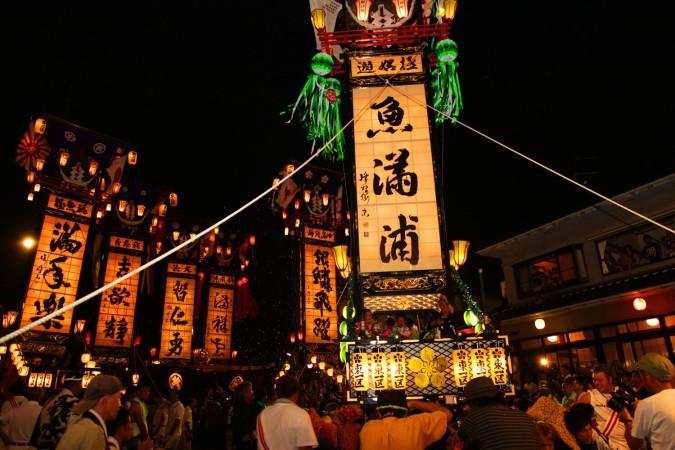
Kiriko Lantern Festival - © Noto Kiriko Official Website
What to Do in Wajima
Whether you’re interested in traditional crafts, outdoor adventures, or local festivals, Wajima offers a diverse range of activities that cater to all interests. Embrace the city’s unique charm and make the most of your visit by exploring these engaging and memorable experiences.
- Engage in Traditional Craft Workshops: The magnificent lacquerware known as Wajima-nuri is the reason for Wajima's fame. Dive into the local culture by participating in hands-on craft workshops where you can learn the intricate art of lacquerware.
- Fishing and Boating Adventure: Take advantage of Wajima’s coastal location by embarking on a fishing or boating adventure. Local guides can lead you on fishing trips to experience the thrill of catching fresh seafood.
- Explore Wajima Hiking Trails: The region offers a variety of hiking trails with breathtaking views. Popular routes include paths through the picturesque Senmaida Rice Terraces and along the rugged Sosogi Coast. These trails provide a great way to immerse yourself in the area's natural beauty.
- Onsen Wellness Retreat: For a soothing and relaxing experience, visit one of Wajima’s local hot springs (onsen). Enjoy a leisurely soak in the therapeutic waters while taking in scenic views. Hot springs are a fantastic way to unwind after a day of exploring and to experience a cherished aspect of Japanese culture.
- Wajima Food Tours: Don’t miss the chance to indulge in Wajima’s local culinary delights. From savoring fresh seafood in a kaisendon (seafood bowl) to enjoying Noto beef and traditional Japanese sweets, Wajima offers a rich variety of flavors. Exploring local restaurants and food stalls will enhance your experience and give you a true taste of Wajima.
Shopping in Wajima
- Traditional Markets: The Wajima Morning Market (Wajima Asaichi) is a must-visit for shoppers. Open every day, the market features stalls selling fresh seafood, local produce, and handmade crafts. It's an excellent place to pick up unique souvenirs and taste local delicacies.
- Local Shops: Wajima is dotted with small shops offering a range of traditional goods. From Wajima-nuri lacquerware and ceramics to textiles and local snacks, these shops provide an authentic shopping experience.
- Souvenirs: Popular souvenirs from Wajima include beautifully crafted lacquerware, intricately designed ceramics, and locally produced sake. These products are ideal as presents and travel souvenirs.
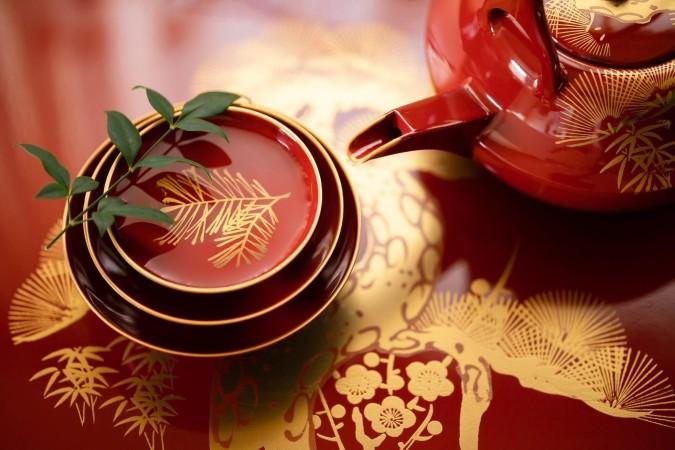
Wajima-nuri lacquerware - © Japanese Taste
Weather in Wajima: Best Time to Visit
Spring in Wajima
- Weather: Spring in Wajima is mild and pleasant, with temperatures ranging from 10°C to 20°C (50°F to 68°F). It's a great time to see cherry blossoms and enjoy outdoor activities.
- Tourism Trend: Travelers love spring because of the hanami (cherry blossom viewing) festivities. Wajima's parks and gardens attract a large number of visitors who come to see the breathtaking sakura flowers. It's also a great time to go sightseeing and engage in outdoor activities like trekking and visiting the Senmaida Rice Terraces because of the pleasant weather.
Summer in Wajima
- Weather: Summers are warm and humid, with temperatures averaging between 20°C and 30°C (68°F to 86°F). The coastal breeze offers some relief, and it's the perfect season for festivals and beach activities.
- Tourism Trend: Summer sees an influx of tourists drawn to the vibrant festivals, such as the Wajima Taisai Festival and the Kiriko Lantern Festival. Beach activities and coastal explorations are also popular during this season. However, the humidity can be high, so visitors should come prepared for the warm weather.
Autumn in Wajima
- Weather: Autumn brings cooler temperatures, ranging from 10°C to 25°C (50°F to 77°F). The fall foliage is beautiful, and it's a popular time for hiking and outdoor exploration.
- Tourism Trend: Autumn is a favorite season for many travelers due to the stunning fall foliage and comfortable temperatures. It's a prime time for hiking, visiting natural landscapes like the Sosogi Coast, and attending the Autumn Harvest Festival. The breathtaking beauty of the changing leaves attracts photographers and outdoor enthusiasts.
Winter in Wajima
- Weather: Wajima experiences frigid winters, with temperatures reaching around 0°C and dropping around 10°C (32°F to 50°F). Snowfall is common, especially in the surrounding mountains, making it a picturesque time to visit.
- Tourism Trend: Winter tourism in Wajima is quieter compared to other seasons, but it offers a unique charm with snow-covered landscapes and festive holiday events. Visitors can enjoy the serene beauty of the winter scenery, participate in traditional New Year's celebrations, and experience local hot springs (onsen) for a warm and relaxing retreat.
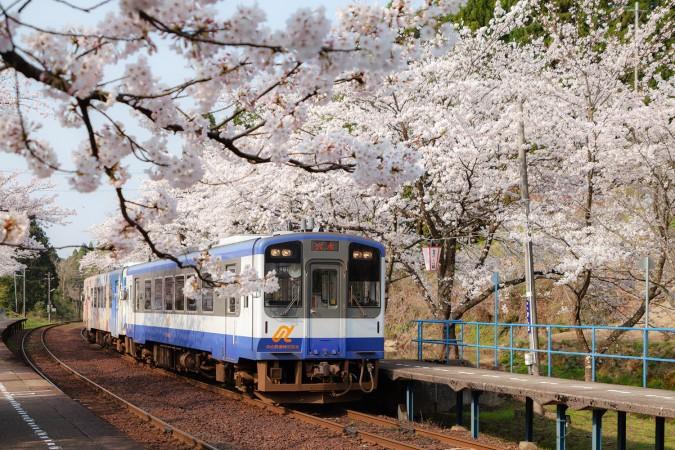
Cherry Blossom season during spring in Wajima - © Ishikawa Tourism
Essential Travel Information
Getting Around Wajima
- Public Transportation: Wajima is connected to other regions by a network of buses and trains, making it easy to travel within the city and to nearby areas. The Wajima City Bus offers convenient routes for exploring local attractions.
- Rental Cars: For more flexibility, renting a car is a popular option. It allows you to explore Wajima and its surrounding areas at your own pace. Make sure that you have an International Driving Permit (IDP) if you're renting a vehicle.
- Bicycles and Walking: Wajima is a pedestrian-friendly city with many attractions within walking distance. Bicycles are also available for rent and provide a pleasant way to explore the city's scenic spots.
ATM & Banking Services
In Wajima, ATMs are conveniently located throughout the city, including at major banks, convenience stores, and shopping areas, and most accept international credit and debit cards. For currency exchange, services are available at various locations, including some hotels and financial institutions. Before you travel, it's a good idea to convert some cash or utilize ATMs to withdraw local currency as needed.
Where to Stay in Wajima
- Traditional Ryokan: For an authentic Japanese experience, consider staying in a ryokan, a traditional inn that offers tatami mat floors, futon bedding, and onsen (hot spring baths). Ryokans in Wajima provide a unique glimpse into Japanese culture and hospitality.
- Hotels: Wajima offers a range of hotels, from luxury to budget options. Many hotels provide modern amenities, including Wi-Fi and restaurants, making them a comfortable choice for travelers.
- Guesthouses and Minpaku: Guesthouses and minpaku (private lodging) offer a more personal and often budget-friendly stay. These accommodations provide opportunities to interact with local hosts and experience life in Wajima from a local perspective.
Are you interested in Okayama? Discover more about this unique destination with our article here.
Articles for you

Experience Aboard The RV Indochine II - A Mekong Cruise With Tweet World Travel
The RV Indochine II is a luxury river cruise ship, offering an unforgettable journey through many attractions along the Mekong River. Built in 2017, this upscale vessel combines colonial elegance with modern conveniences to create a comfortable yet stylish environment for its crew and passengers. The ship’s intimate size makes it ideal for those seeking a more personal cruising experience while exploring Vietnam and Cambodia rich culture, scenery, and heritage. Whether you're gazing at the landscape from your private balcony or enjoying authentic local cuisine, RV Indochine II promises an exotic adventure like no other.

Witness Stilt Fishing In Sri Lanka: An Eco-Tourism Experience
Sri Lanka, renowned for its stunning beaches and rich cultural heritage, harbors a unique tradition that has captivated travelers for centuries: stilt fishing. This ancient practice, passed down through generations of coastal communities, blends artistry with necessity, offering a glimpse into a way of life intimately connected to the island's coastal rhythms. Stilt fishing in Sri Lanka isn't merely a means to catch fish; it's a cultural emblem, embodying the resilience and ingenuity of Sri Lanka's fishing communities.

Make Your Trip Stress-Free With The Tweet Trip App
Embark on your next adventure with confidence by downloading the Tweet Trip App, available for both iOS and Android. This essential travel companion allows you to view your detailed itinerary, stay connected with your tour guide and fellow travelers, receive real-time updates, and provide feedback effortlessly. With features like in-app messaging, emergency assistance, and location sharing, the Tweet Trip App ensures you travel smarter, stay connected, and enjoy a seamless, worry-free journey. Get started today and make the most of your travel experience with Tweet World Travel.

Pedal Through Paradise: Unveiling Cambodia's Hidden Gems on Two Wheels
The gentle whir of bicycle wheels mingles with the distant chants of monks as you glide past emerald rice paddies stretching to the horizon. This is Cambodia - a sensory explosion waiting to be experienced on two wheels. At Tweet Tours, we believe there's no better way to immerse yourself in the Kingdom of Wonder than by bicycle.
Cambodia isn't just a destination; it's a living, breathing tapestry of ancient wonders, natural beauty, and vibrant culture. Our carefully crafted cycling tours take you beyond the typical tourist haunts, offering a unique perspective on this captivating country. Ready to clip in and discover the magic of Cambodia? Let's ride!

Trekking in the Himalayas: A Journey Through Nepal's Majestic Peaks
The Himalayas rise from the earth like colossal guardians, their snow-capped peaks piercing the sky in a display of nature's raw power and beauty. Nepal, nestled at the heart of this mountain range, serves as the gateway to some of the most breathtaking trekking experiences on the planet. Here, the air is crisp and thin, filled with the promise of adventure and the whispers of ancient tales.
With Tweet Tours, as you set foot on these hallowed trails, you're not just a traveler - you're a modern-day explorer, following in the footsteps of legendary mountaineers and age-old traders. Each step takes you further into a world where nature reigns supreme and human resilience is tested against the backdrop of some of the world's highest peaks.
From the moment your boots touch the ground in Kathmandu, you'll feel the pull of the mountains. The bustling streets of the capital, with their sensory overload of sights, sounds, and smells, soon give way to serene mountain paths where the only soundtrack is the crunch of gravel underfoot and the distant tinkling of yak bells.

Exploring Mui Ne's Wonders: Unique Attractions & Local Dishes
Nestled along the southeastern coast of Vietnam, Mui Ne emerges as a captivating gem, blending natural wonders with cultural richness. Renowned for its stunning landscapes and unique attractions, Mui Ne beckons travelers seeking both relaxation and adventure in equal measure. Mui Ne's renowned beach dunes, bustling fishing towns, and excellent local food await exploration at every turn.
The allure of Mui Ne lies not only in its pristine beaches and crystal-clear waters but also in its diverse range of activities catering to every traveler's whims. Whether you're drawn to thrilling water sports like kitesurfing and windsurfing on its dynamic shores or seeking tranquility amidst the picturesque Fairy Stream, Mui Ne promises an unforgettable journey filled with discovery.
